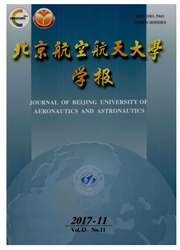

 中文摘要:
中文摘要:
在红外热像无损检测中直接获取的原始热像往往信噪比较低、温度对比度较差.为了抑制各种噪声的不良影响,使红外热像无损检测所重构的数字图像有较高的缺陷对比度,从而提高缺陷探测能力,提出了采用奇异值分解法对红外数字图像序列进行处理和增强的方法,并进行了验证.介绍了奇异值分解法的原理;用奇异值分解法对实验中采集的红外热像序列进行处理;以信噪比为指标对图像处理效果进行了定量评定.研究表明奇异值分解法具有抽取红外热像序列中反映试件内部缺陷信息代数特征的能力,可消除加热不均效应、提高图像的信噪比,且缺陷在图像中所处的位置不影响奇异值分解法的使用效果.因此奇异值分解法是红外热像无损检测中红外热图像序列处理的有效方法.
 英文摘要:
英文摘要:
The raw thermal images acquired in infrared thermographic nondestructive testing( IT NDT) usually have low signal-to-noise ratio (SNR) and temperature contrast. In order to restrain the bad effects of noise, singular value decomposition (SVD) technique was used in infrared image sequence processing to yield high defect contrast for digital images reconstructed in IT NDT and to improve the flaw detectivity, and its validity was illustrated by examples. The principle of SVD was introduced. The SVD method was used to process the infrared image sequences obtained in experiments. The image processing effect was quantitatively evaluated by SNR. The research indicates that SVD has the ability of extracting the algebra characteristics which reflect the underlying structural flaw in a sample. It can remove the uneven heating effect and increase the SNR of images, and the defect location in images doesn't affect the practical efficacy of SVD. Thus SVD is an effective method for IR digital image sequence processing in IT NDT.
 同期刊论文项目
同期刊论文项目
 同项目期刊论文
同项目期刊论文
 期刊信息
期刊信息
